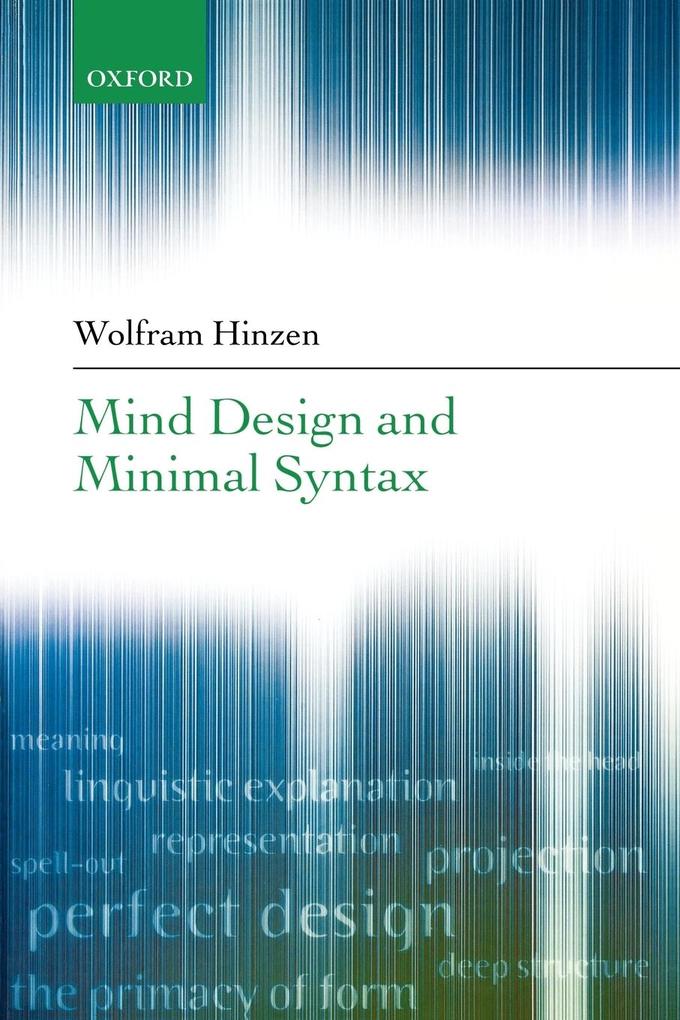This book introduces generative grammar as an area of study and asks what it tells us about the human mind. Wolfram Hinzen lays the foundation for the unification of modern generative linguistics with the philosophies of mind and language. He introduces Chomsky's program of a "minimalist"
syntax as a novel explanatory vision of the human mind. He explains how the Minimalist Program originated in work in cognitive science, biology, linguistics, and philosophy, and examines its implications for work in these fields. He considers the way the human mind is designed when seen as an
arrangement of structural patterns in nature, and argues that its design is the product not so much of adaptive evolutionary history as of principles and processes that are ahistorical and internalist in character. Linguistic meaning, he suggests, arises in the mind as a consequence of structures
emerging on formal rather than functional grounds. From this he substantiates an unexpected and deeply unfashionable notion of human nature.
Clearly written in nontechnical language and assuming a limited knowledge of the fields it examines and links, Minimal Mind Design will appeal to a wide range of scholars in linguistics, philosophy, and cognitive science. It also provides an exceptionally clear insight into the nature and aims of
Chomsky's Minimalist Program.
Inhaltsverzeichnis
- Preface
- Acknowledgements
- Part I: Naturally Human
- 1: Introduction
- 1.1: Humans as natural objects
- 1.2: The study of human nature
- 1.3: Human design
- 1.4: The fate of human nature in the twentieth century
- 2: Against metaphysical naturalism
- 2.1: From methodological to metaphysical naturalism
- 2.2: Rationalist method from Galileo to Chomsky
- 2.33: Double standardsBiological internalism
- 3: Biological internalism
- 3.1: Biology before unification
- 3.2: Mind as function: A critique
- 3.3: God or natural selection or . . . ?
- 3.4: 3.4 Epilogue on explanation and necessity
- Part II: Deducing Variation
- 4: Prior to function
- 4.1: Language growth
- 4.2: Language and communication
- 4.3: Language as a social construct
- 5: Beyond the autonomy of syntax
- 5.1: What is syntax?
- 5.2: Explanation in linguistic theory
- 5.3: Human phrase structure
- 5.4: Transforming the phrase
- 5.5: Why is there movement?
- 5.6: The proper interpretation of LF/SEM
- Part III: Rational Mind
- 6: Good Design!
- 6.1: Phases and cascades: Beyond LF
- 6.2: Epistemology for mental organs
- Conclusions
- References
- Index













